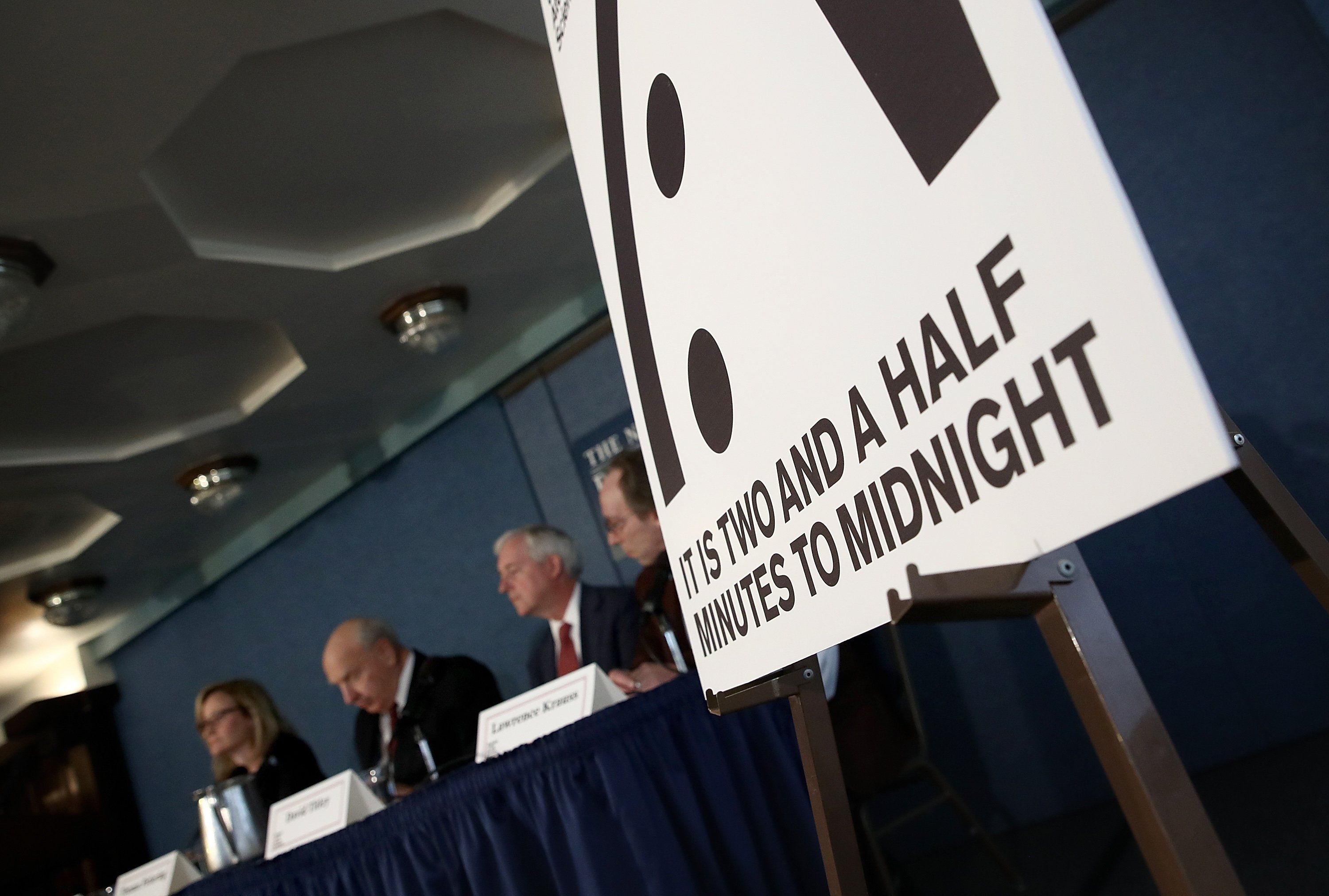The ability to modify the weather has long belonged in the realm of science fiction, but now a team of scientists in Idaho think they’ve figured out how to make it happen outside a lab.
The ocean is crowded. As many as 10 million viruses can be found squirming in a single millilitre of its water, and it turns out they have friends we never even knew about.
Scientists have discovered a previously unknown family of viruses that dominate the ocean and can’t be detected by standard lab tests. Researchers suspect this viral multitude may already exist outside the water — maybe even inside us.
“We don’t think it’s ocean-specific at all,” says environmental microbiologist Martin Polz from MIT.
Tesla has managed to ship several high-end electric vehicles to consumers, but commercial trucking is the company’s next big move. After showing off its design for an electric semi truck, the company has been working on an aggressive release schedule. However, the vehicle hasn’t been spotted in real life until now. A video uploaded to YouTube shows Tesla’s sleek electric semi cruising down a road in California.
There are few details to glean from this short clip (below). The original prototype trucks Tesla unveiled several months back did not have side mirrors, leading some to suspect Tesla had some fancy alternative in mind. The truck just spotted in the wild does have mirrors, though. That’s necessary for it to be street-legal, so Tesla probably just omitted the mirrors for the announcement to make the truck look cooler.
As you can see in the video, the front of the semi is narrower than standard diesel trucks. It doesn’t need a giant engine, and the cab is slightly smaller with a centered driver’s seat. It’s vastly quieter than a regular semi as well. The truck doesn’t even drown out other road noise as it passes the camera. There’s someone behind the wheel of the truck, but Tesla is touting the autopilot features of the vehicle. Although, many have pointed out Tesla’s self-driving tech is far behind the curve.
Robots can walk, talk, run a hotel … and are entirely stumped by a doorknob. Or a mailbox. Or a dirty bathtub—zzzzt, dead. Sure, the SpotMini, a doglike domestic helper from Boston Dynamics, can climb stairs, but it struggles to reliably hand over a can of soda. That’s why some roboticists think the field needs to flip its perspective. “There are two approaches to building robots,” says Maya Cakmak, a researcher at the University of Washington. “Make the robot more humanlike to handle the environment, or design the environment to make it a better fit for the robot.” Cakmak pursues the latter, and to do that, she studies so-called universal design—the ways in which buildings and products are constructed for older people or those with disabilities. Robot can’t handle the twisting staircase? Put in a ramp. As for that pesky doorknob? Make entryways motion-activated. If you want droids at your beck and call someday, start thinking about robo-fitting your digs now.
1. Wide-Open Floor Plan Any serious sans-human housekeeping needs a wheeled robotic butler with arms, Cakmak says. That means fewer steps, plus hallways wide enough for U-turns. Oh, and hardwood floors. Thick carpeting slows a bot’s roll.
2. Visual Waypoints Factory robots work so fast in part because their world is highly structured—conveyor belt here, truck over there. So for your robo-home, create landmarks that anchor the bots in space—a prominent light fixture, say, that tells them, “You’re in the dining room.” (RFID tags will help bots locate smaller objects, like cleaning supplies.)
Einstein’s secret to an incredibly intelligent brain may be in part to how well his brain aged…
Samples of his brain revealed he was missing a protein Lipofuscin, a not so well understood compound which contains lipid residues of lysosomal digestion that accumulates in the brain liver kidney, heart muscle, retina, adrenals, nerve cells, and ganglion cells.
Lipofuscin busting drugs could have a lot of potential for anti-aging therapies for the future.
The debate over telomeres length is now back in the spotlight… Here is a brief review of the top articles on telomere length, telomerase and human diseases such as cancer…
A review of the top articles on telomerase and telomere length which play a role in the chronic diseases of aging, such as cancer.
A look at Lt. Gen. Paul Nakasone’s public statements about artificial intelligence, offense, and defense.
The Army general likely to be tapped to head U.S. Cyber Command and the NSA has some big plans for deploying cyber forces and using artificial intelligence in information attacks.
Lt. Gen. Paul Nakasone, who currently leads U.S. Army Cyber Command, is expected to nominated in the next few months to replace Adm. Michael Rogers, as first reported by The Cipher Brief (and confirmed by the Washington Post and a Pentagon source of our own). But caution is in order: the rumor mill says several other contenders are in the running, including Army Lt. Gen. William Mayville. Neither Cyber Command nor the Pentagon would comment about the potential nomination.
Robots are already changing jobs as an endless array of robots enter our everyday lives. From trucking to service work to high-end jobs like doctors and lawyers, this documentary explores how robotics and artificial intelligence are changing the workplace.
AJ+‘s documentary series on automation explores how advancements in artificial intelligence, robotics, machine learning and automated vehicles will affect jobs, cities and inequality. From trucking to radiology, new technology is already changing white collar and blue collar occupations, reshaping cities and concentrating wealth in the hands of the few. Robots are taking over the world as companies like Tesla, Amazon, Uber and Google are using robots to automate.
Subscribe for more videos:
Like us on Facebook: https://www.facebook.com/ajplusenglish
Download the AJ+ app at http://www.ajplus.net/
Follow us on Twitter: https://twitter.com/ajplus









